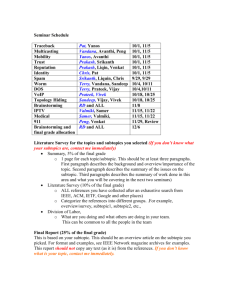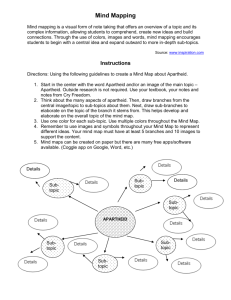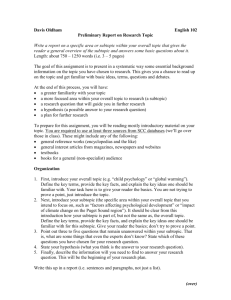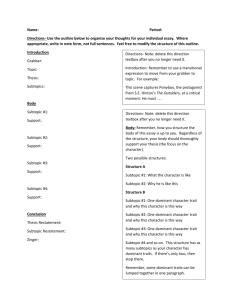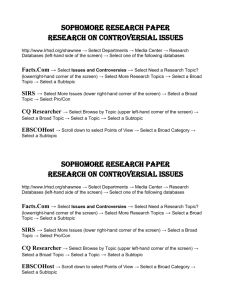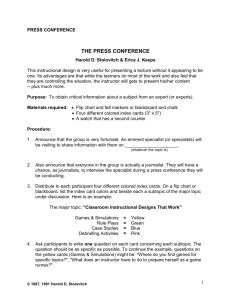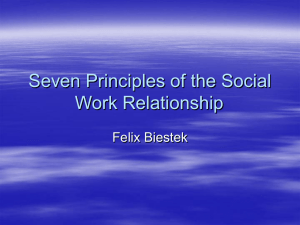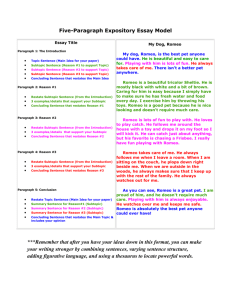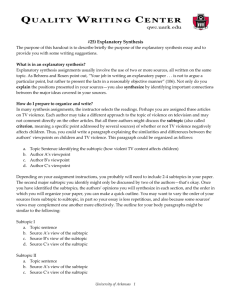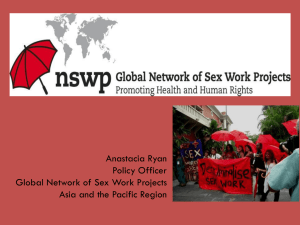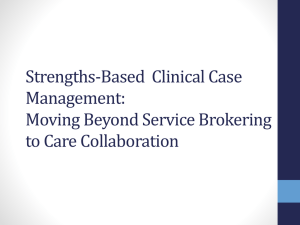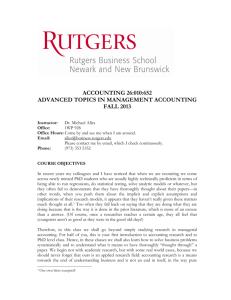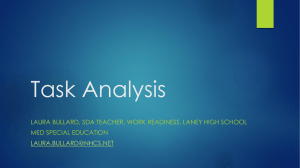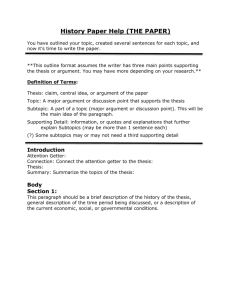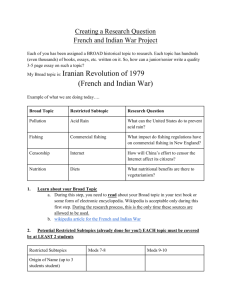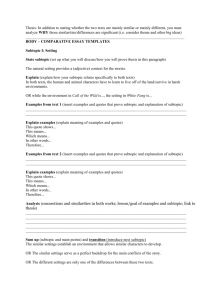Summary report topic II - European Agency for Safety and Health at
advertisement
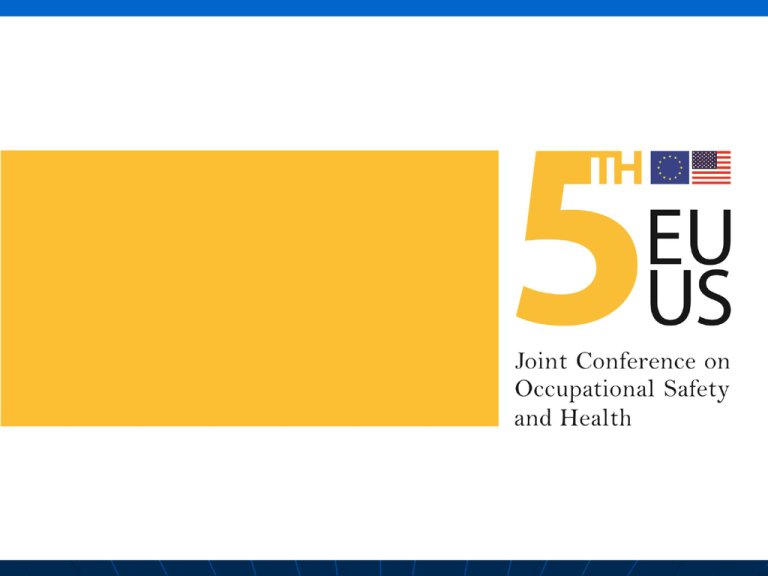
Topic II: Health and Safety Education and Training Subtopic 1:Overview of Health and Safety Training EU Framework • Employers are legally obligated to take measures to ensure worker safety and health including provision of information and training. Scope- applies to both public and private sectors • Training must be done at no cost to the worker. Employee representatives with safety and health responsibilities also entitled to training at no cost during work hours. Directives establish training requirements for specific hazards. EU requirements transposed to the National level Specific training developed under 3 general approaches. • 1:National training requirements established by legislation • 2:Branch or industry wide agreements established under bipartite/tripartite governing boards • 3. Training developed based on accepted codes of Practice US framework • No comprehensive training and Education requirement • Curriculum based on specific hazard or requirements of the OSHA standard Many organizations follow systems approach to instructional design. • No formal tripartite approach Labor, Industry & Government all provide training to both employees and supervisors • Varying degrees of collaboration and cooperation between the three • Delivery – (EU and US) Classroom/hands on practical training Imbedded with technical training PC based “Just-in-time” (here is the job, this is how you do it safely) Peer to Peer Coaching, Mentoring, Buddy Systems • Assessing effectiveness Level 1 – Student Reaction Level 2- Student learning skills, knowledge, Attitudes Level 3 – post training (6-9 months), did training result in change on the job/transfer of training Challenges Despite different frameworks, EU and US face similar challenges • Reaching SMEs many lack resources to effectively train • Training consistency • High turnover rate in certain industries • Increased use of temporary workers and subcontractors • Lack of common understanding of “Safety Culture” • Expanding markets Different cultural views of safety and risk Difficulty reaching target audiences Aging of safety and health professionals • Maintaining safety and health expertise Effectiveness of training • Is it being learned? • Is it being applied? Barriers to training (language, literacy, generational, cultural) Fear of training (recertification and testing issues) Strategies & Approaches Structured comprehensive approach to safety • Risk assessment • Training targets • Training content • Planning • Delivery • Evaluation • Continuous improvement and adoptions Management involvement at all levels • Leadership commitment, planning, ongoing management, resources Employee involvement in all aspects of safety and health including training development, delivery and application Facilitating government/inspection Establishment of baseline training • Adapted to particular industry or geographic location Collective bargaining/branch agreements Grant programs • Fund non-profit organizations to conduct training Train-the-trainer programs Partnerships to deliver training to wider and more diverse workers Guidance to SMEs on how to conduct and access training “Tool Box Training” • On-site 10-15 minutes on different topics Employer and Worker Identification of specific S&H training needs of workforce and target training Future Collaboration Build on synergy • A lot of good training/strategies have been developed in both EU and US • Develop a structured accessible forum for sharing these on an on-going basis Web-based Continued collaboration between EU and US and between labor, industry, government and other stakeholders Continued collaboration among participants • Identify specific mechanisms Succession Planning (future conference topic) Subtopic II: Education for Young People and New Workers Background: • Employees have significantly higher risk of injury during the first year of employment Challenges Young workers more likely to take risks • Employers more inclined to condone or not recognize risk Less sense of a “Safety Culture” • Don’t recognize the importance of safety • Not aware of employee rights or employer obligations Fear of losing job Market pressures • Labor shortages in many high risk industries • High turnover as employees move between jobs Often different hazards Competing demands on educational system Lack of safety and health education requirements Decentralized school systems Strategies & Approaches Safety and Health Education Curriculum for all levels of education • Encourages safe thinking and awareness at an early age. • Age appropriate Nursery- puzzles and games Primary – Secondary – safety culture and hazard awareness training University (business mgt, engineering, MD) Safety poster contests (e.g. Poland) Information meetings and workshops for youth – community picnics • Children can positively impact parents awareness and behavior Annual informational campaigns Video Contests (posted on youtube) • 1000s of hits Incorporation of safety and health content into mainstream education requirements (reading, math, etc) Development and delivery of core curriculum which can be tailored by teachers at all educational levels (e.g. NIOSH) Apprenticeship programs Vocational Programs Charter Schools • High schools which focus on developing students to enter construction industry Development of H&S management system for schools (e.g. Ireland) • Teacher support and training of safety Future Collaboration Evaluation of programs under development and piloting Mechanism to inform about new programs/projects in EU and US Sharing of best practices and innovative approaches Pooling, sharing and expanding resources Subtopic III: Addressing Cultural Language and Literacy Barriers Background: • Both EU and US have an increasing number of immigrant workers who do not share language or culture of host country • Tend to work in high risk industries • High instances of accidents, injuries and fatalities Challenges Varying levels of risk acceptance • Perceptions Legal status Underground economy Effectiveness of translators Cultural differences Literacy • Both host and own languages Access to training Knowledge and skill level • Varies Lack of standardization Strategies and Approaches Peer training/mentoring • Pair worker with journeyman worker who can help facilitate understanding of training Cultural surveys before work begins • Identify individual views • Develop training to target individual and regional differences Multilingual materials and information Partnerships with consulates to distribute training materials and information Use of visual training materials • Pictogram risk assessment • Work plan • Consequences • “Silent Movies” (e.g. Napo DVD) • Helps addresses literacy issues Hands on practical training Community based access points • Churches, banks, physicians, libraries, workers centers Children are often more literate than parents and can facilitate transfer of S&H information Communication and language skills • Buddy system on work site Hazard specific translation services • Transperanto.org offers translation of key words and services for transportation of dangerous materials (27 different languages) Future Collaboration Sharing of materials and approaches • Explore opportunities to standardize Standardization of visual materials Partnership to provide information to workers before migration/immigration See future collaboration under subtopic I & II
